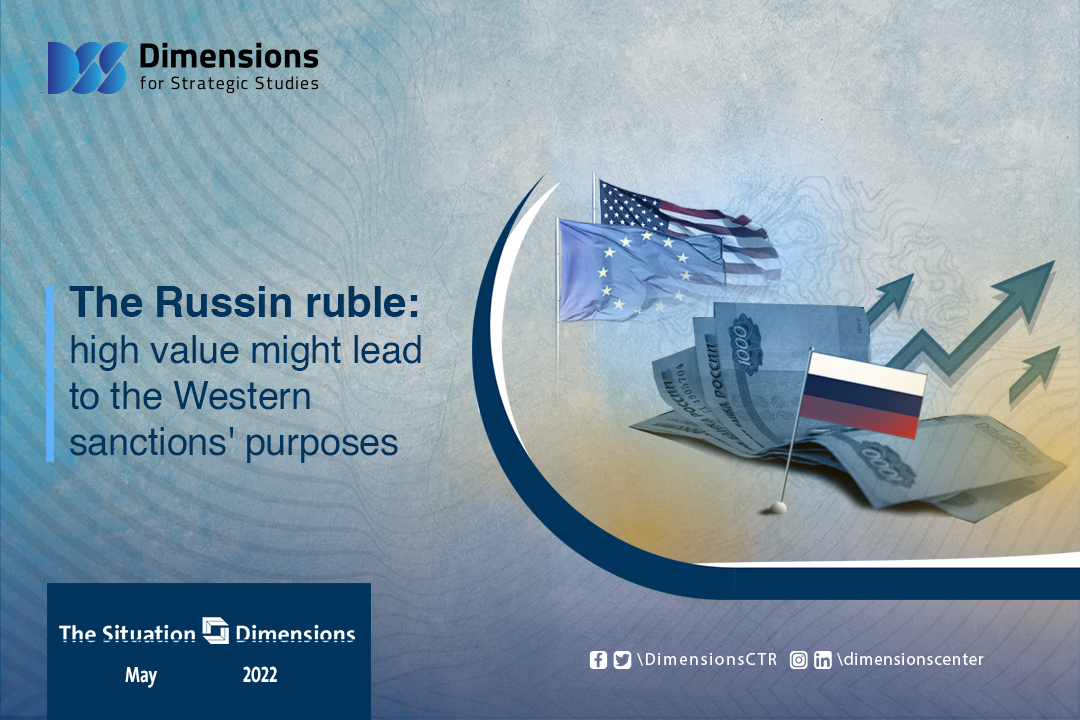
The Russin ruble: high value might lead to the Western sanctions' purposes
2022-05-241886 view
As the Russian invasion of Ukraine started, Western countries intensified sanctions against the Russian economy in an unprecedented way. As a result, many foreign companies and investors left the Russian market. Few companies even started the journey to find sources of transactions other than the Russian ones. Consequently, the Ruble lost 20% of its value in the first few days of the war trading at a price above 100 Rubles; and in some cases, the exchange was above 125 Rubles to the dollar.
Just in a few days, the Ruble began to recover going back to its pre-sanctions status even beyond; and it achieved actual unprecedented gains. It is now 57 Rubles to the dollar.
As the Russian invasion of Ukraine started, Western countries intensified sanctions against the Russian economy in an unprecedented way. As a result, many foreign companies and investors left the Russian market. Few companies even started the journey to find sources of transactions other than the Russian ones. Consequently, the Ruble lost 20% of its value in the first few days of the war trading at a price above 100 Rubles; and in some cases, the exchange was above 125 Rubles to the dollar.
Just in a few days, the Ruble began to recover going back to its pre-sanctions status even beyond; and it achieved actual unprecedented gains. It is now 57 Rubles to the dollar.
On the surface, such figures are not disturbing to Russian decision-makers; because they might be used to argue that the sanctions failed to harm the Russian economy, especially if signs of improving inflation rates in Russia are added to the reported figures.
However, the Ruble's current exchange rate costs Moscow dearly; and this could be seen in three aspects:
1. Since sanctions were placed on Russia, its government has sought to take economic measures to counter this challenge, imposing paying for Russian basic commodities in Rubles, namely gas, oil, coal, major grains, and minerals, which are major commodities for partners’ economies.
“22 out of 54 companies that have natural gas contracts with energy giant Gazprom have opened accounts in Russian Rubles,” the Russian government says. This means that they have either bent to Russia's demands or are on their way. Making payments in higher-value Rubles, however, means that these companies have eventually to pay more. For foreigners, if 100 Rubles can buy one US dollar, and a commodity is worth 50 rubles, this means that a dollar could be paid to purchase two 50-rubles commodities, this means that the company can buy two items of this commodity in one single dollar.
Supposing that 50 rubles could buy one dollar, it means that the same company can only buy one single commodity. Thus, an overvalued Ruble would make Russia's exports less and consequently foreigners' purchases less.
2. Indeed, some companies started buying the Russian Ruble, which caused an increase in its value due to the boosting demand for it. This, however, does not necessarily mean that Moscow can easily make payments in Rubles to buy foreign goods. The Ruble might be a required currency for payments to be made by these companies only, but it will not be an internationally accepted currency. Central banks as well as companies certainly know that the Ruble has an uncertain fate and that its price -perches on top of a Russian iceberg; and it may experience a free fall at some point.
3. Maintaining a Ruble of high-value requires a monetary policy for controlling the flow of capital outside the country. This would jeopardise the freedom of markets. Moreover, the Russian Central Bank will supply hard currencies to buy Rubles in the event that demand for the latter decreases in order to maintain its equilibrium limits. This means more risk to the Central Bank's remaining foreign reserves necessary for the expanding Russian civil and military spending against the background of a war that has just begun, and does not seem to be ending soon.
Potential Russia's clients are closely monitoring the situation, keeping in mind that when it comes to deal with Russian companies, they face three main risks:
Firstly, to be affected by the sanctions that they must avoid through purchases. There is another matter buyers should be aware of, which is a logistic risk related to the situation in the region and the traffic of ports and transportation. Finally, buyers might face the risk of buying commodities in a high value if denominated in foreign currencies.
After all, when putting in balance these risks and alternatives to Russian goods; buyers are more likely to turn their back to Russian markets, which Western countries would like to see, as it fulfills the intent of the sanctions designed to damage Russia's economy.
After all, when putting in balance these risks and alternatives to Russian goods; buyers are more likely to go away from the Russian markets, which Western countries would like to see, as it fulfills the intent of the sanctions designed to damage Russia's economy.





